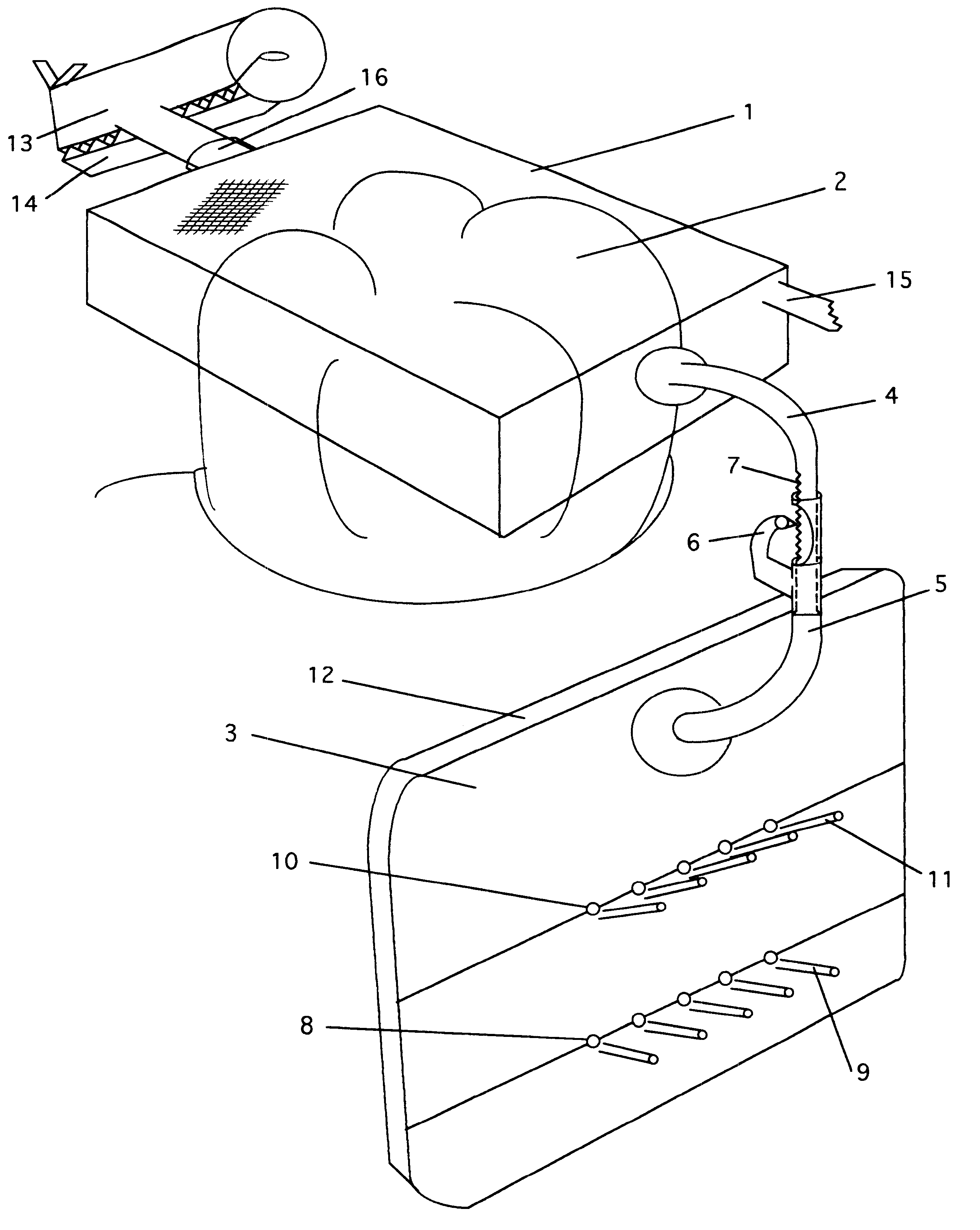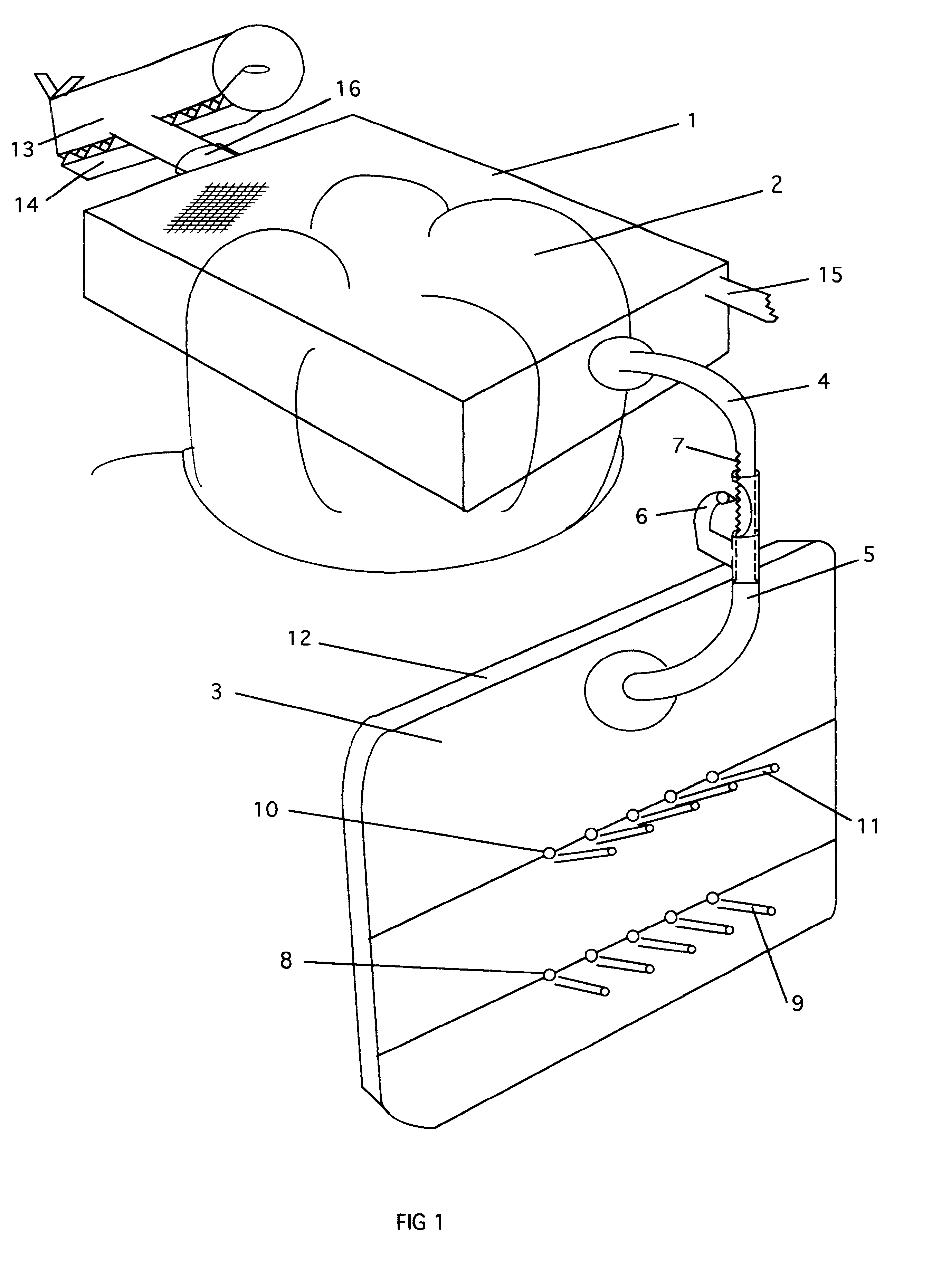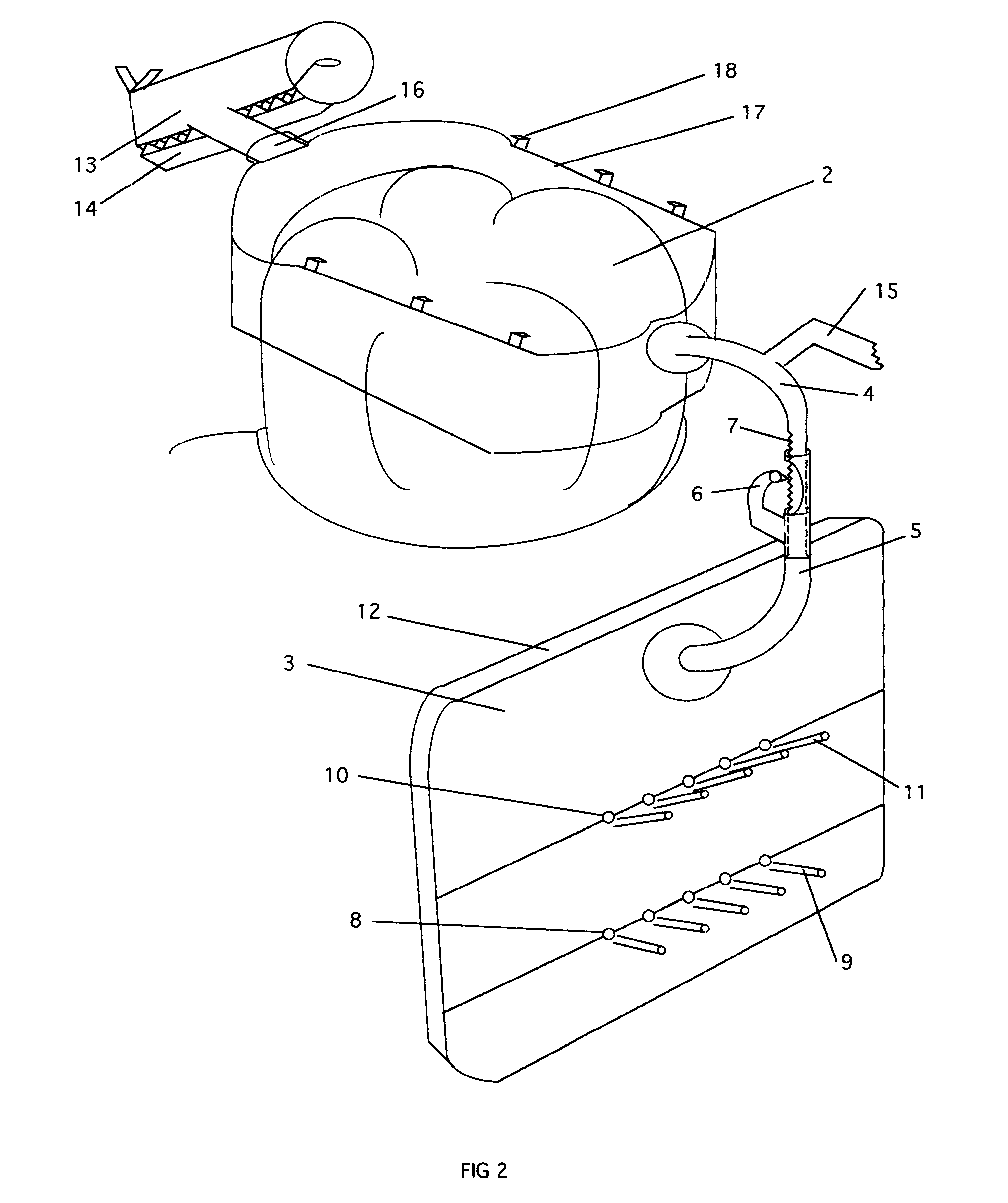Dental cortical plate alignment platform
a technology for aligning platforms and dentinoids, which is applied in the field of dentinoids, can solve the problems of increasing the cost, affecting the success of the patient's and the threat of breaking and subsequent successful retrieval of all foreign objects
- Summary
- Abstract
- Description
- Claims
- Application Information
AI Technical Summary
Benefits of technology
Problems solved by technology
Method used
Image
Examples
Embodiment Construction
FIG. 1 bite block 1 is shown in transparent outline form over a lower left molar 2 of a patient. As seen by the crosshatching, the upper surface is solid. To connect block 1 to guidance platform 3, arcing down from the facial (cheek) side is adjustment arm 4, which is positioned inside the uplifted arm 5 rising from the guidance platform itself. The flexible wedge 6 together with the serrated edge 7 of upper arm 4 creates a trombone lock which can be elevated by the Dentist about three millimeters or lowered as much as five millimeters from the initial position. In both drawings the female element 5 bearing the wedge 6 is shown attached to the platform 3, but this is one aspect of a reversible arrangement whereby the serrated male element 7 could have been at the terminal end of the arm connected to the platform with arm 5 connected to the bite block.
A line of horizontal drilling ports 8 are positioned about ten to twelve millimeters below the crown of molar 2, which automatically p...
PUM
 Login to View More
Login to View More Abstract
Description
Claims
Application Information
 Login to View More
Login to View More - R&D
- Intellectual Property
- Life Sciences
- Materials
- Tech Scout
- Unparalleled Data Quality
- Higher Quality Content
- 60% Fewer Hallucinations
Browse by: Latest US Patents, China's latest patents, Technical Efficacy Thesaurus, Application Domain, Technology Topic, Popular Technical Reports.
© 2025 PatSnap. All rights reserved.Legal|Privacy policy|Modern Slavery Act Transparency Statement|Sitemap|About US| Contact US: help@patsnap.com



